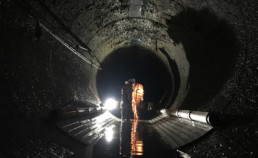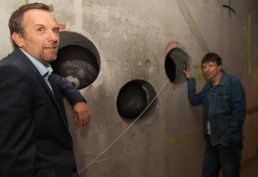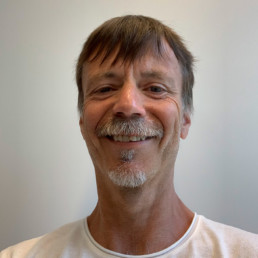Stavanger municipality has established a central energy plant that uses heat from the city's wastewater to produce energy.
Any water that flows into the sewer, like when we wash clothes or dishes, take a shower or bath, can potentially be used as an energy source.
Today, the central energy plant delivers heat and cooling to three of the municipality’s administrative buildings, including the main swimming pool in Stavanger. The central energy plant is based solely on local renewable energy sources and will reduce the municipality’s CO₂ emissions by at least 75 % compared to previous solutions.
The purpose of the central energy plant is to heat and cool buildings using local climate-friendly energy sources to reduce the building’s emissions. As part of this exercise, we tested several renewable energy sources before the decision was reached to locate heat exchangers in the sewer tunnel. The goal is to reduce CO₂ emissions from 571 tonnes to 65 tonnes. This equals a reduction of 506 tonnes of CO₂ each year. By comparison, 1 tonne of CO₂ amounts to about 100 round-trips for a single person between Stavanger and Oslo, or a one-way ticket from Oslo to New York.
The central energy plant is located below the swimming pool in Stavanger and is based primarily on heat pump technology and heat exchangers. The sewer tunnel is equipped with 100 heat exchangers, which extract heat from the sewer. The heat pumps collect the heat from the tunnel that lies below Løkkeveien and increases the temperature so that it can be used to heat the buildings. In addition to the energy from the heat pumps and the wastewater, the central energy plant is supplied with water which is heated by 200 m² of solar collectors on the roof of the swimming pool, and heat recovered from the showers in the swimming pool. . On extra cold days, the city uses climate-neutral biogas as a peak-load.
Heat exchangers in the sewer tunnel. Photo: Lars Augustsson
This is what the work with the central energy plant has led to
Work on the central energy plant started in 2014, but the outcomes and learnings from the project will live on long after the Triangulum project has finished. These are some of the most important learning points.
Climate-neutral biogas has replaced natural gas for heating
Stavanger municipality has converted from natural gas to climate-neutral biogas for heating 13 municipal buildings including schools and nursing homes. This shift has reduced CO₂ emissions by 230 tonnes per year. During the work with the central energy plant, the municipality chose to use climate-neutral biogas for peak-load days, when extra energy was required. Biogas is more expensive than natural gas but is a more environmentally friendly form of energy. One of the takeaways from the Triangulum project is that while it is costly to be environmentally friendly, the upside is substantial.
The central energy plant saves the city 506 tonnes of CO² per year
Direct heat collection from wastewater, has never been installed in Norway before. By using the city’s sewage tunnel as the primary energy source, the municipality has used a renewable energy source that is readily available in most cities. The new central energy plant will reduce CO₂ emissions from 571 tonnes to 65 tonnes. One of the goals of the Triangulum project is to be able to replicate the solutions trialled in the lighthouse cities in other cities. With sewage as a potential energy source, the project has a high carry-over value in Norway and Europe.
Several awards won
The municipality’s central energy plant has won two national awards for its high levels of innovation, high complexity and for solving water challenges that have been difficult to solve. In November 2017, the central energy plant won the Water Industry Prize, and in March 2018, the central won the annual heat pump award. Engineer Fredrik Skaug Fadnes has also received a silver medal for his work with the central energy plant in the European engineering competition, EFCA Young Professionals.
Leidulf Skjørestad (left) and Ernst Olsen show the holes in the energy plant’s concrete wall. Here, there will be room for the water pipes that will conduct heat from the sewer into the heat pumps, as well as pipes for electrical wires. Photo: Alf Bergin
Manager, Operating and Energy sector
Stavanger municipality
Communication advisor
Stavanger municipality
Phone: 452 92 828
Email: inger.hanne.vikshaland@stavanger.kommune.no





